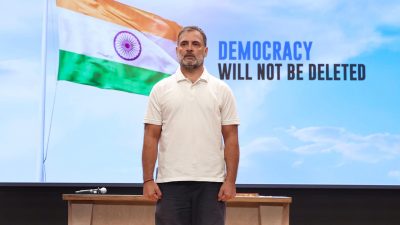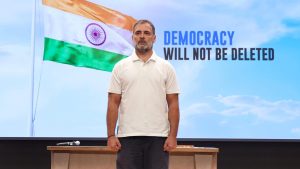Strength begets respect
It is over six weeks since Clinton's visit to the Indian subcontinent. Thefocus of foreign policy and strategic analyses on the event has ...

It is over six weeks since Clinton’s visit to the Indian subcontinent. Thefocus of foreign policy and strategic analyses on the event has been aboutits impact on Indo-Pakistan relations and prospects of Indo-US relations.Another dimension of the visit which has not been taken note of, but whichmerits attention is the regional and international reaction to the visit,the new equations which were sought to be established during theClinton-Vajpayee discussions.
Reactions from different parts of the world, particularly from our region,would require appropriate responses in our foreign policy. These responseswill necessarily be influenced by two factors. First, what were the extendedobjectives that we hope to achieve by the Clinton visit? Second, perceptionsabout the visit in our neighbouring countries and amongst the countriesfurther afield with whom India has substantive relations.
The objectives which India has in mind beyond the bilateral Indo-USframework could be summed up as follows: Creation of a durable basis forlong-term and substantive economic, political and technological relationswith the US would result in the other countries accepting India as acredible partner for such cooperation. A strong relationship with the USwill either diminish or remove political and strategic inhibitions thatother countries, particularly the Western democracies, might still haveabout opening up relations with India.
The punitive and highly critical stance of the West about India’s nuclearand missile weaponisation will be moderated if India and the US sustain thedialogue on these issues with a view to enabling India to participate in themainstream non-proliferation negotiations without compromising on itssecurity interests.
The US policies on Indo-Pak relations as crystalised during the visit wouldhopefully influence Pakistan which, in turn, may improve the regional andpolitical security environment, giving a sense of security to India’s otherneighbours also. When India is restructuring its relations with the majorpowers in the Eurasian landmass Russia, China, and Japan a substantiveand positive equation with the US, could form the basis for an equilibriumin India’s relations with these countries. Before commenting on the extentto which these objectives are likely to be achieved, it would be relevant tosurvey international reactions to the visit.
These have not been entirely positive. My interaction with academics anddiplomats of the SAARC region (leaving aside Pakistan), indicated an amountof disappointment and concern on their part. The view expressed was that thevisit was totally concentrated on India-US relations and on dealing with thecritical dimensions of Indo-Pakistan relations. There was no reference inthe public pronouncements of either Clinton or Vajpayee regarding India’srelations with its other neighbours. Nor was there any policy pronouncementregarding the desirability of strengthening the SAARC or resolving a numberof bilateral issues between India and its other neighbours.
The apprehension tactfully articulated was that the smaller neighbours ofIndia would have to face the predicament of the two bigger powers, India andthe USA, coming to agreement on various problems affecting the regionwithout taking much notice of concerns of the smaller countries. Thereference to India’s prospective role as a major entity dealing with Asiansecurity problems, may encourage India towards hegemonistic tendencies.
Publications of the People’s Liberation Army of China commented criticallyon the visit, implying that the Indo-US equation has the potential ofbecoming an anti-Chinese strategic phenomenon. In contrast, a ma-cro-levelpolitical response was that China welcomes the improvement in Indo-USrelations, that China firmly believes that good relations with one countrydoes not and should not be antagonistic to developing equally good relationswith other countries. Russian media commentaries, inspired by de-epbackground governme- nt briefings, asserted that Clinton’s visit was aimedat diluting the substantive relations and political equations that existbetween India and the Russian Fed- eration. At the higher political level,the reaction has been that the Russian Federation will observe the emergingtrends in Indo-US relations with great interest and that the RussianFederation is equally interested in strengthening relations with India.
Reactions of Western democracies fo-und expression both in policy statementsand actual diplomatic initiatives. The Australian Foreign Minister, whosegovernment was stridently critical of India’s nuclear weaponisation, visitedIndia and indi- cated that Australia wants to modify its original stance andrevive relations with India. British Foreign Secretary Robin Cook was inIndia in the first half of April in an entirely new and positiveincarnation. Apart from affirming Britain’s desire to expand and diversifyIndo-British economic relations, he indicated a willingness to discusscritical issues related to security and non-proliferation with India in apractical manner, giving up the previous oratory and tutorial approach.
President Narayanan’s discussions with French President Jacques Chirac andPrime Minister Lionel Jospin helped in giving positive orientations toIndo-French relations. France also endorsed India’s candidature for apermanent seat in the Security Council in more categorical terms. The firstmeeting of the Sino-Indian Joint Working Group on the Boundary Question tookplace in New Delhi from April 29 to May 1. President Narayanan’s forthcomingvisit to China would be of undoubted political significance transcending theceremonial dimensions of the visit.
Reports from the US indicate that Clinton himself has been active inemphasising the importance of India in US foreign policy, as an economic andpolitical partner. He has not only given his assessment on these lines tothe executive branch of his government but also to Congressmen and seniorleaders of the resident Indian community in the US.
Coming to the objectives which we have in mind as a consequence of hisvisit, one could say that the general political and economic objectives arebeing met. The significant indicator is the World Bank sanctioning thefinancial flows of just under one billion dollars for various projects inUP. Important powers like Russia and China are also focussing more attentionon India to balance off competitive strategic potentialities of equationsbetween India and the US. While the US and other nuclear weapons powersremain insistent about India signing the CTBT etc., the stringency againstIndia has been replaced by incremental acceptance of Indian nuclearrealities and a willingness to discuss practical solutions with India.
While the punitive pressure may be off, political and diplomatic pressure onIndia will continue on non-proliferation matters. India has to beparticularly sensitive and responsive to the apprehensions of its otherSouth Asian neighbours.





- 01
- 02
- 03
- 04
- 05


























